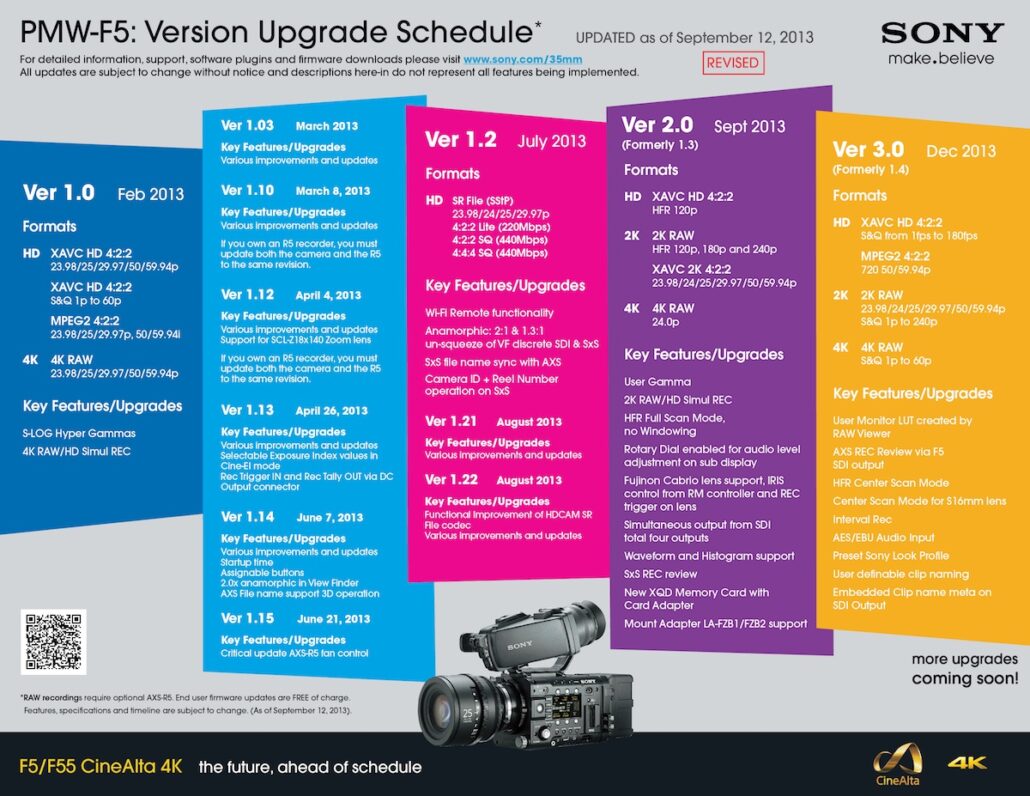News
Firmware updates for Sony F5 and F55
In the image above we can see the updates poster presented by Sony that summarizes the features that have been and will be introduced in the F5 and F55 cameras over the coming months.
First of all, the names of versions 1.3 and 1.4 (which had already been announced) have been changed to 2.0 and 3.0 respectively.
A few days ago firmware version 2.0 became effective. It officially adds support for XQD memory cards (the same ones used in the recently announced PXW-Z100) that will work with the appropriate adapter.
Support for B4 (2/3″) to FZ mount adapters has also been included: LA-FZB1 and LA-FZB2; enabling 4K productions. Both offer the same optical performance, but the latter offers a servo-controlled filter disk for changing ND and CC (color correction) filters remotely. Both feature a 12-pin Hiroseconnection for ENG lenses.
Finally, with this update comes high-speed recording covering the entire sensor area, with HFR (High Frame Rate) mode in Full Scan. This mode allows recording without sensor cropping.
In this video you can see the first images recorded at 240fps on the F55.
http://vimeo.com/74387467
Version 3.0 (announced for December) will give the option of HFR in Center Scan, which does crop the sensor and is intended for Super 16mm lenses. Sony is also introducing a Center Scan mode for users of this type of lens. The camera would record the central proportion of the sensor covered by the lenses in both HD and 2K.
Support will be added for 50p and 59.94p speeds for recording 2K RAW files.
One of the most requested features will arrive in December, with a new time-lapse recording mode.
The Sony F5 and F55 cameras will feature the same MLUT mode found on the F65 and the RAW Viewer software. Although not much is known about this, if it is the same as on the F65, the cameras will be able to import CDL LUT files for viewing on set and they will be recorded as metadata in the RAW file.
Currently the clip names cannot be modified. With the arrival of v3.0 the user will be able to customize them and even output them as metadata through the SDI output when using external recorders.
Finally, the two XLR ports on the side of the camera will support AES/EBU inputs, giving access to all four audio channels.


